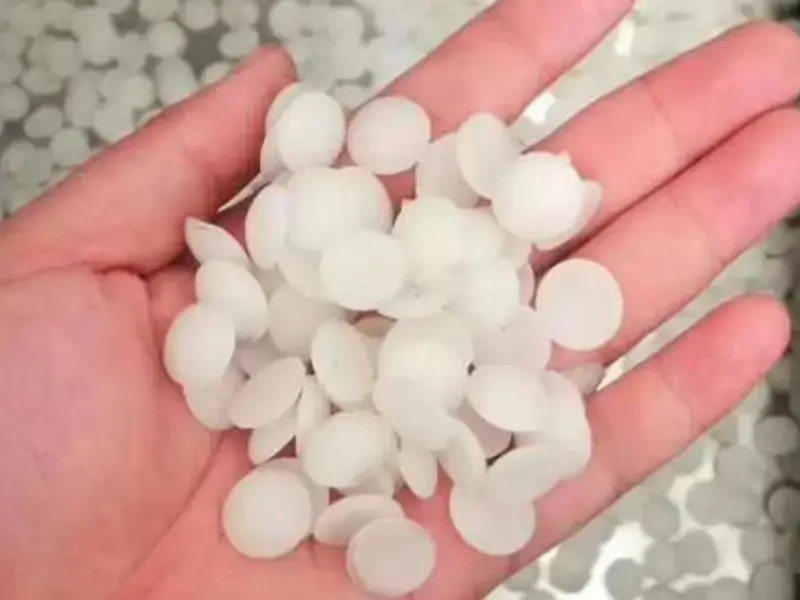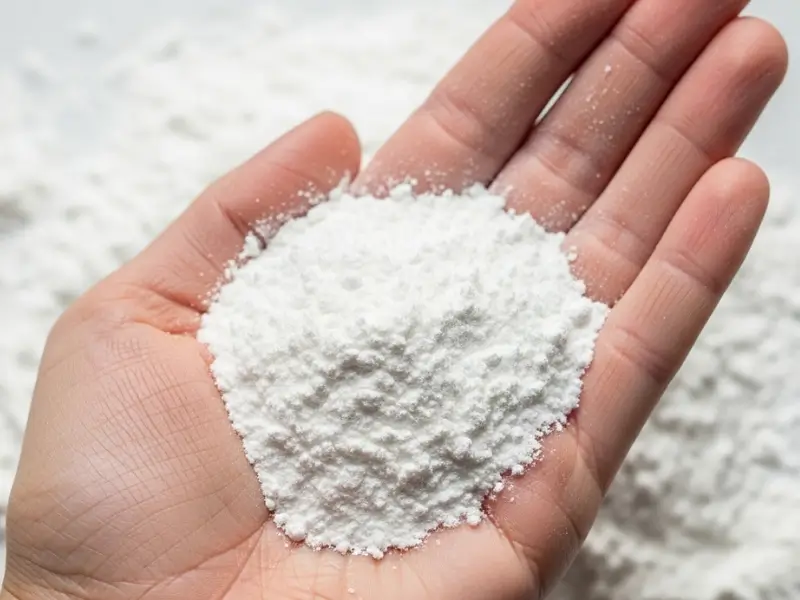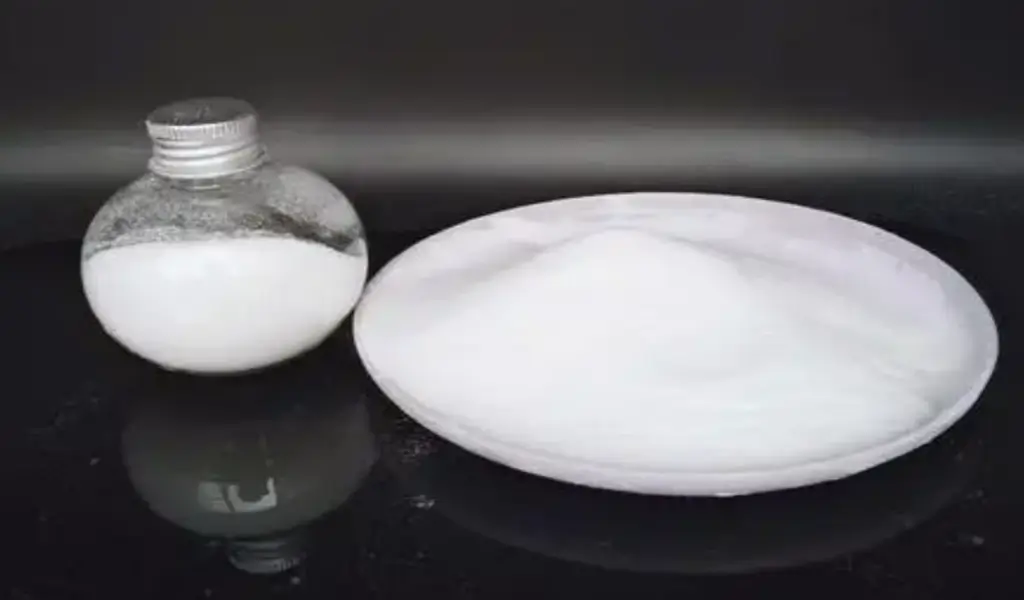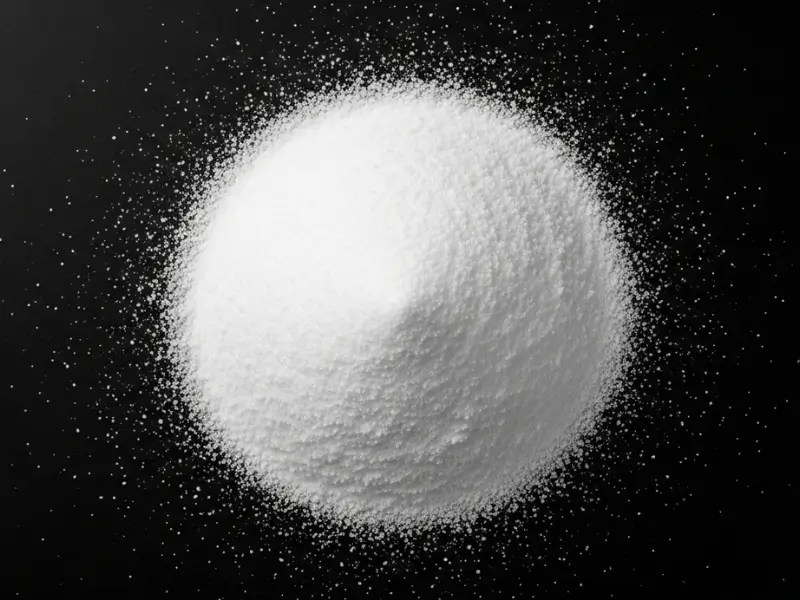Yes, CPVC is approved for potable water use in Europe. It complies with national standards like WRAS (UK) and DVGW (Germany), confirming its safety, hygiene, and suitability for drinking water systems under EU regulations and performance testing.
1. Introduction to CPVC and Its Applications
CPVC is a widely-used thermoplastic material known for its strength, durability, and resistance to corrosion. But here’s the kicker: what makes CPVC especially valuable is its enhanced thermal stability compared to PVC, allowing it to withstand higher temperatures. This characteristic makes it particularly suitable for applications involving hot water distribution. In Europe, CPVC finds itself primarily in plumbing systems, industrial piping, and pressure applications, where reliability is pivotal.
The use of materials approved for potable water is governed by a strict regulatory framework in Europe. To ensure the safety of drinking water, materials used in water supply systems must meet high standards that assess their physical and chemical properties, potential leaching of contaminants, and overall effectiveness in preventing hazards to public health.
The significance of CPVC’s regulatory environment cannot be underestimated. Compliance with these regulations ensures that not only is public health safeguarded but that material manufacturers and suppliers maintain their credibility. When working on projects that involve potable water systems, understanding CPVC’s applications and related regulations is imperative.
| Aspect | Detail |
|---|---|
| What is CPVC? | A strong thermoplastic used in plumbing and industrial applications. |
| Key Feature | Enhanced thermal stability compared to PVC. |
| Applications | Plumbing, hot water distribution, and industrial piping. |
2. Understanding Potable Water Standards in Europe
What’s the real story behind potable water standards? In Europe, the definition of potable water includes stringent criteria to guarantee that water is safe for human consumption. The Drinking Water Directive, established by the European Union, outlines these standards to support member states in ensuring accessible, safe drinking water for all citizens.
This directive mandates rigorous monitoring of drinking water quality and enables regulatory authorities to set permissible limits for various contaminants, including microbial, chemical, and physical parameters. For CPVC and other materials used in contact with drinking water, the specifications require testing for leachates that could contaminate the water supply.
Additionally, the standards also encompass mechanical performance criteria to ensure that installation practices do not compromise the integrity of the water delivery system. Therefore, materials need to comply not only with chemical safety criteria but also with mechanical stability and durability requirements under different pressure and temperature conditions.
What’s compelling is that distinct countries may have additional regulations on top of the EU’s directives, making it crucial for manufacturers to stay updated on the specific requirements they must fulfill. This complex landscape requires adherence to both EU standards and national specifications, aligning safety with local regulations.
| Standard | Description |
|---|---|
| Drinking Water Directive (DWD) | EU regulation ensuring safe and quality drinking water. |
| Chemical Limits | Maximum permissible limits for contaminants. |
| Mechanical Performance | Requirements for durability and stability. |
3. CPVC: Composition and Characteristics
Ready for a deep dive into CPVC? CPVC is derived from PVC through a chlorination process that modifies its chemical structure, enhancing properties such as temperature resistance and corrosion prevention. The unique polymer structure of CPVC provides it with improved mechanical strength, allowing it to perform effectively in high-pressure systems.
Key characteristics of CPVC include its high resistance to heat, withstanding temperatures of up to 200°F (93°C) and beyond without compromising its integrity. This capability makes it ideal for transporting hot water, particularly in residential plumbing and commercial applications.
When compared to traditional materials, the advantages of CPVC become even clearer. For example, while PVC is sensitive to heat and can deform under elevated temperatures, CPVC maintains its shape and performance. Moreover, its chemical resistance ensures that it can withstand a wide array of substances, including harsh chemicals, which is crucial in many industrial applications.
What’s interesting is that alongside its practical benefits, CPVC also provides excellent installation versatility, as it can be easily joined through solvent cementing and can be used in both pressure and non-pressure applications.
| Property | CPVC | PVC |
|---|---|---|
| Temperature Resistance | High (up to 200°F) | Moderate (up to 140°F) |
| Chemical Resistance | Excellent | Good |
| Joining Method | Solvent cementing | Solvent cementing |
4. Regulatory Bodies Overseeing CPVC Approval in Europe
But here’s the kicker… understanding the regulatory bodies that oversee CPVC approval in Europe is essential for ensuring compliance. The European Union has established various agencies responsible for the assessment and approval of materials used in potable water systems. Key among these bodies are the European Commission and the European Food Safety Authority (EFSA).
The European Commission plays a primary role in evaluating regulations and directives, ensuring that they reflect public health priorities and scientific advancements. It proposes legislation that member states must implement concerning materials that come into contact with drinking water, including CPVC.
Additionally, national regulatory bodies in individual EU countries play a crucial role in the approval process. For instance, agencies like the United Kingdom’s Drinking Water Inspectorate or Germany’s Federal Ministry of Health enforce compliance with local laws that align with EU directives.
The implications of this multi-layered regulatory landscape mean that manufacturers must navigate both EU-wide regulations and specific national requirements. Companies seeking to market CPVC for potable water use must understand the interplay between these various regulatory agencies.
| Regulatory Body | Function |
|---|---|
| European Commission | Proposes legislation and oversees EU directives. |
| European Food Safety Authority (EFSA) | Evaluates risk assessments related to food and water safety. |
| National Regulatory Agencies | Enforce compliance with local laws and regulations. |
5. Testing and Certification Processes for CPVC
What’s behind the curtain of testing and certification for CPVC? The journey to obtaining regulatory approval for CPVC is comprehensive and hinges on rigorous testing to confirm that the material meets various safety and quality standards. The assessment typically involves two primary components: physical property testing and chemical safety assessments.
Physical property testing examines how CPVC behaves under various conditions, including its tensile strength, impact resistance, and thermal stability. These characteristics are evaluated through standardized methods to ensure that CPVC can withstand pressure and temperature variations encountered in real-world applications.
On the chemical side, testing focuses on potential leaching of substances from CPVC into drinking water. This is crucial because any leachable contaminants could pose health risks. Standards dictate that CPVC must demonstrate an acceptable level of leaching, verified through tests that mimic actual usage conditions.
Once tested, manufacturers must compile a comprehensive certification dossier. This documentation must detail the testing methods, results, and compliance with all relevant standards, which regulatory authorities will review. Only upon successful evaluation can CPVC products be marked for compliance and be used in potable water applications.
| Testing Type | Focus Area | Standards Involved |
|---|---|---|
| Physical Property Testing | Assess mechanical performance | EN 1452-2, ASTM D2846 |
| Chemical Safety Assessment | Evaluate leaching risks | EN 12056-1, NSF/ANSI 61 |
6. Potential Health Risks and Safety Considerations
This is where it gets interesting… the safety of materials used in potable water systems like CPVC is paramount. While CPVC is generally regarded as a safe material, there are potential health risks tied to leachates. These are substances that may migrate from the material into the drinking water, which can pose health concerns.
One primary concern is the presence of chemical additives used in the manufacturing process of CPVC. These additives can include stabilizers, lubricants, and fire retardants. Each of these substances has to be evaluated during the approval process for their potential to leach into water, and the risk assessments focus on ensuring that any migration remains within safe limits.
Moreover, while CPVC demonstrates excellent resistance to microbial growth, improper installation or maintenance of systems can introduce risks. For instance, stagnant water in poorly designed piping may lead to the growth of bacteria or biofilms in the system. This is where engineering practices become key, and ensuring proper installation and regular maintenance is essential to mitigate these risk factors.
What’s significant is that the development and implementation of quality control measures throughout the manufacturing and installation process help minimize risks and enhance the safety of CPVC use in drinking water applications.
| Health Concern | Description |
|---|---|
| Leaching of Additives | Possible migration of chemicals into drinking water. |
| Microbial Growth | Risks associated with stagnant water in pipes. |
| Contamination Risks | Ensuring compliance with safety standards. |
7. Trends in Potable Water Regulations Impacting CPVC
What’s the latest buzz in potable water regulations regarding CPVC? Regulations surrounding drinking water continue to evolve, reflecting growing public concern about water quality and safety. Recent trends focus on more stringent limits for contaminants, aiming to maintain high standards for public health.
One major development is the review and updating of allowable standards for chemicals that can leach from materials like CPVC, aligned with ongoing research into the effects of long-term exposure on human health. For instance, specific focus has shifted toward endocrine disruptors and other emerging contaminants, pushing regulators to impose stricter guidelines.
Furthermore, there is an increasing emphasis on sustainability within regulations. Policymakers are recognizing the need for materials that not only perform well but also support environmental goals. This leads to innovations in bio-based additives and materials, prompting CPVC manufacturers to explore eco-friendly alternatives to conventional chemical formulations.
The implications for manufacturers are significant. As regulations tighten, companies will need to invest in research and development to ensure compliance while also taking advantage of opportunities that arise from a focus on sustainability.
| Regulatory Trend | Description |
|---|---|
| Stricter Chemical Limits | Tighter controls on leachable substances. |
| Focus on Sustainability | Preference for eco-friendly materials. |
| Emerging Contaminants | Addressing safety concerns over new chemical risks. |
8. Comparative Analysis: CPVC vs. Other Pipe Materials
Are you ready for a comparison? When it comes to materials used in plumbing and potable water systems, CPVC stands out among various alternatives such as PVC, PEX (cross-linked polyethylene), and metal options like copper or galvanized steel. Each of these materials carries its set of advantages and disadvantages, but CPVC has unique qualities that merit attention.
Starting with PVC, while less expensive and easier to handle, it has limitations in terms of temperature and pressure handling when compared to CPVC. It tends to deform under high temperature, which can alter system performance in hot water applications.
PEX, on the other hand, is flexible, allowing for fewer fittings and easier installation. However, concerns about the potential for leaching and long-term reliability have prompted scrutiny among regulators and consumers alike.
Metal options, like copper, demonstrate excellent longevity and resistance to microbial growth, but they are more expensive and can be prone to corrosion, depending on water chemistry. Furthermore, they are more time-consuming and costly to install.
What becomes clear in this comparison is that each option has its roles, but CPVC offers enhanced thermal stability and chemical resistance, making it particularly suited for safe and effective potable water applications.
| Material | Advantages | Disadvantages |
|---|---|---|
| CPVC | High temperature resistance, chemical durability | May require special fittings |
| PVC | Cost-effective, easy to handle | Limited temperature tolerance |
| PEX | Flexible, fewer fittings | Concerns over chemical leachates |
| Copper | Durable and long-lasting | More expensive, subject to corrosion |
9. Environmental Impact of CPVC and Sustainability
This section showcases an evolving narrative: the environmental impact of building materials, including CPVC, has garnered increasing attention in recent years. As public awareness grows around sustainability, many manufacturers are reevaluating how their products align with eco-friendly practices.
CPVC is often praised for its longevity and performance, which reduces the need for frequent replacement, thereby decreasing overall environmental waste. However, the production process does involve the use of some non-renewable resources, prompting an interest in more sustainable alternatives.
Moreover, new research into bio-based polymers is becoming more relevant. Innovations are being made in creating CPVC from renewable sources, which could lessen the reliance on fossil fuels and promote sustainability within the industry.
In addition to these developments, the potential for recycling CPVC products at the end of their lifecycle is also beginning to be explored. With the right processes in place, CPVC can be reprocessed and reused, presenting an exciting opportunity for reducing waste in an industry that often faces scrutiny over environmental impacts.
| Environmental Aspect | Consideration |
|---|---|
| Longevity | Reduces frequency of replacement and waste. |
| Resource Usage | Concerns over non-renewable resources in production. |
| Recycling Potential | Opportunities to repurpose CPVC after its lifespan. |
10. Practical Considerations for Using CPVC in Potable Water Systems
How can you ensure that CPVC performs best in your systems? When utilizing CPVC in potable water applications, several practical considerations need to be factored in to maximize performance and ensure compliance with regulations.
First, proper installation is crucial. CPVC pipes require specific joining techniques, typically utilizing solvent cementing, and ensuring that the correct method is employed is vital to achieving a robust, leak-free system. Additionally, understanding the thermal expansion of CPVC due to temperature changes is essential to prevent stress and potential damage.
Maintenance also plays a significant role in ensuring the longevity of CPVC systems. Regular inspections for leaks, signs of degradation, or wear can prevent larger issues from arising, potentially saving money and time.
Education and training for installers and technicians are critical. Providing training on proper installation techniques and system maintenance can help mitigate common issues associated with CPVC, leading to more reliable installations that comply with safety regulations.
What’s paramount is that by adhering to best practices in installation and maintenance, professionals can take full advantage of CPVC’s properties while ensuring a safe and successful potable water system.
| Installation Aspect | Best Practice |
|---|---|
| Joining Techniques | Use of proper solvent cementing methods. |
| Temperature Awareness | Awareness of thermal expansion factors. |
| Maintenance | Regular inspections to prevent degradation. |
11. Case Studies of CPVC in Potable Water Applications
What lessons can we learn from real-world applications? Examining case studies involving CPVC in potable water systems reveals valuable insights into both successes and challenges in different contexts.
One notable case is a municipal water project in Germany where CPVC was employed to upgrade aging, failing pipe systems. By replacing outdated materials with CPVC, the project demonstrated a marked reduction in leaks and maintenance costs, further ensuring reliable access to clean drinking water for residents.
Another example comes from a commercial development in Spain, where CPVC was chosen for its lightweight nature and thermal resistance in the complex installation of plumbing systems. The successful implementation showcased how effective CPVC can be in high-rise buildings, managing not only hot water distribution but also minimizing installation time and labor costs.
Lastly, a healthcare facility in the Netherlands adopted CPVC for its plumbing needs, specifically citing the material’s resistance to corrosion and its overall compliance with drinking water regulations. This choice reinforced its commitment to safety and reliability in delivering potable water to patients.
These cases underline the practical application of CPVC under different circumstances, showcasing its benefits while providing lessons learned that inform future projects and installations.
| Case Study Location | Application Insight | Key Outcome |
|---|---|---|
| Germany | Municipal water system upgrade | Reduced leaks and maintenance costs. |
| Spain | Plumbing in high-rise commercial development | Streamlined installation and reduced labor. |
| Netherlands | Healthcare facility plumbing | Enhanced corrosion resistance and safety. |
12. The Future of CPVC in Water Supply Systems
Ready to gaze into the future? The trajectory of CPVC in potable water systems is promising, not just because of its established performance, but due to ongoing innovations and shifts within the industry.
Emerging technologies related to CPVC include advancements in material formulations, possibly incorporating bio-based components that promote sustainability and reduce dependency on traditional petrochemical sources. As environmental concerns heighten, such innovations may drive demand for eco-friendlier versions of materials previously seen as conventional.
In addition, the evolution of smart technologies poses opportunities. Integrating IoT (Internet of Things) solutions into water supply systems, including CPVC, can enable real-time monitoring of water quality and pipe integrity. This data-driven approach empowers systems to be more responsive, enhancing maintenance practices and ensuring better safety outcomes.
Moreover, as governmental regulations continue to adapt in response to increasing concerns about contaminants and public health, CPVC manufacturers will need to remain ahead of the curve, responding promptly to these changes to ensure compliance and market competitiveness.
Ultimately, CPVC is well-positioned as a reliable and sustainable material for water supply systems, with the potential for innovative developments that can reshape the water infrastructure landscape.
| Future Trend | Description |
|---|---|
| Bio-based Formulations | Innovations reducing environmental impact. |
| Integration of IoT | Smart technologies enhancing monitoring and management. |
| Evolving Regulations | Adapting to stricter controls and standards. |
13. Best Practices for Compliance with European Regulations
What steps can you take to ensure compliance with regulations? This question is vital for manufacturers and stakeholders working with CPVC in potable water applications. Understanding and adhering to best practices for regulatory compliance is crucial.
First, conduct regular audits and reviews of compliance processes to keep up with changing standards at both the EU and national levels. Staying informed about which certifications are required for CPVC products ensures that no step is overlooked during the approval process.
Collaboration with regulatory authorities and participating in industry forums can provide insight into upcoming shifts in regulations, allowing companies to prepare adequately. This proactive approach aids organizations in avoiding potential pitfalls that could arise from sudden regulatory changes.
Furthermore, maintaining accurate documentation of all manufacturing processes, certifications, and compliance measures is essential. This not only supports transparency but also streamlines the approval process when interacting with regulatory bodies.
Lastly, continuous training for staff to ensure that everyone involved in the manufacturing and installation processes understands the implications of compliance is crucial. This commitment to compliance helps build a culture of safety within the organization and reinforces the quality of products offered to the market.
| Compliance Aspect | Best Practice |
|---|---|
| Regular Audits | Review compliance processes frequently. |
| Collaboration with Authorities | Engage with regulators for insights on changes. |
| Documentation | Maintain accurate records of compliance measures. |
| Staff Training | Educate employees on the importance of regulations. |
14. Expert Opinions on CPVC and Potable Water Safety
What do industry experts have to say? Gathering insights from professionals involved in the CPVC manufacturing and regulation landscape provides a broader perspective on how CPVC is viewed in the context of potable water safety.
Experts believe that CPVC holds a strong position in the industry due to its proven track record and compliant safety standards. Many point out that as long as manufacturers adhere closely to regulations, CPVC remains a safe, dependable option for plumbing and water supply applications.
However, there’s also a call for ongoing research into long-term health effects associated with CPVC leachates. Some experts advocate for funding studies dedicated to understanding how materials used in potable applications affect water quality over time.
Additionally, many industry leaders emphasize the importance of sustainability in future CPVC developments. They view the integration of environmentally friendly materials and practices as essential for the industry’s evolution and acceptability among consumers.
The consensus underscores that while CPVC demonstrates many advantages in potable water applications, continuous improvement and vigilance will enhance its reputation and effectiveness in current and future markets.
| Expert Insight | Commentary |
|---|---|
| Track Record of Safety | CPVC remains a reliable choice if properly regulated. |
| Long-term Studies Needed | Call for ongoing research on health effects. |
| Sustainability Focus | Emphasizes need for eco-friendly innovations. |
15. Conclusion: The State of CPVC for Potable Water Use in Europe
In conclusion, the regulation of CPVC for potable water use in Europe involves a complex web of standards and practices aimed at ensuring public health and safety. Understanding the material’s properties, regulatory demands, and ongoing trends is essential for stakeholders in various industries. With proper compliance to existing regulations and an eye on future innovations, CPVC can continue to play a significant role in delivering safe and reliable drinking water.
As public concern regarding water safety increases and regulations evolve, the future of CPVC looks promising, provided that all industry players stay informed, engaged, and proactive. Adapting to changes, embracing innovations, and prioritizing safety will enable CPVC to maintain its position as a valuable material for potable water applications for years to come.
FAQ Section
Q1: What is CPVC?
CPVC (Chlorinated Polyvinyl Chloride) is a thermoplastic material used in various plumbing and piping applications, appreciated for its durability and heat resistance.
Q2: How does CPVC approval work for potable water?
CPVC approval involves compliance with EU drinking water regulations, requiring extensive testing and certification that demonstrates the material is safe for human consumption.
Q3: What are the health risks associated with CPVC?
Health risks include potential leaching of additives used in the manufacturing of CPVC, which may contaminate drinking water if not properly regulated.
Q4: What trends are influencing potable water regulations?
Current trends include stricter limits on leachable substances, a focus on sustainability, and heightened awareness of emerging contaminants in drinking water supplies.
Q5: What are best practices for using CPVC in drinking water systems?
Best practices include proper installation procedures, regular maintenance checks for system integrity, and continual training for installation teams to ensure compliance with regulations.





